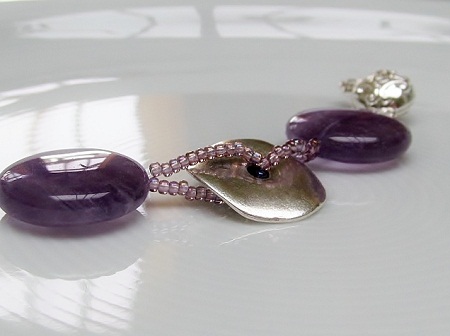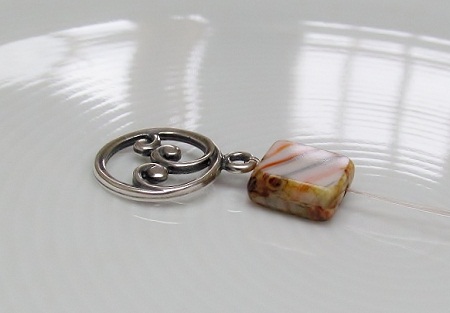This necklace is composed of open and closed components. The open shapes are incorporated by the use of wire crossings. In no time you will create an impressive necklace and harvest tons of admiration by the simple and elegant technique in which you cross the two wires through the beads.

Challenge:
- The change of direction of the wires in the intersection beads requires that you work meticulously, and that you check each section carefully.
Supplies:
- a unit of closed shapes: Czech glass beads
- three units of 16x16 mm cornflake beads in Zamak
- Czech seed beads 11/0
- 120 cm of 0,28 mm polyethylene thread or cabled stainless steel wire
- a toggle clasp
- if you use cabled wire: 2 crimp tubes, crimp pliers and cutters
- scissors and a beading surface
Instructions for a necklace made with the technique of crossing wires:
- thread the wire through the eye of a section of the toggle clasp
- fold the wire into two in the middle
- attach the clasp with a knot or a crimp tube
- thread both wires together through a square or rectangular bead
- *further on, you will work with each thread separately
- string on each wire 8 Czech seed beads
- then pass one of the threads through a cornflake bead
- add on the same side of the cornflake bead a single seed bead
- implement a crossing of the wires: pass the other wire in opposite direction through both the seed bead and the cornflake bead
- at each side of the beads a thread will appear
- tighten up both threads so that the seed bead of the intersection gets behind the cornflake bead
- string 8 seed beads on each wire
- pass both threads through a square or rectangular bead**
- check if the cornflake bead is neatly in place and if the wires are equally long
SEE - part 2







